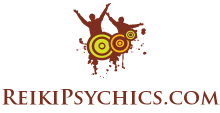We often lose the capacity to relax and rejuvenate our mind and body as daily pressure builds due to life’s challenges. This negativity has the ability to disrupt your personal energy and wreak havoc in surprising areas of your physical and mental well-being. When you start to think of your mind and body as a whole and connected entity, you will recognize that many physical discomforts and ailments may stem from negative thoughts. Reiki is a healing therapy designed to address just this problem.
 The Japanese healing therapy of Reiki harnesses the power of touch to transfer energy and move healing energy throughout the body to where it is needed. It is a non-invasive therapy that directs ki (energy) throughout the body to dislodge and uproot the negative energies that have taken root and caused you to suffer from illness and lack of confidence. By embracing Reiki therapy, you will ensure that your ki is able to flow strongly throughout your body so that you are in the best health to live a happy and successful life.
The Japanese healing therapy of Reiki harnesses the power of touch to transfer energy and move healing energy throughout the body to where it is needed. It is a non-invasive therapy that directs ki (energy) throughout the body to dislodge and uproot the negative energies that have taken root and caused you to suffer from illness and lack of confidence. By embracing Reiki therapy, you will ensure that your ki is able to flow strongly throughout your body so that you are in the best health to live a happy and successful life.
Reiki was first developed in the early 1900s by a Buddhist monk and is based on the movement of life force (ki) through the seven chakras. Often times these energy blockages will manifest as physical illness, fatigue or feelings of discontent. The negative forces will collect in the areas of the body near the blockage and fester as they grow. By turning to a Reiki master, you will be able to address the underlying issues that are at the root of your problems and free yourself from the negative affects of these blockages.
The ki at the heart of Reiki is found in other cultures and referred to as chi, prana or life force. The purpose of a Reiki healing session is to transmit ki from one person to another as guided by divine forces. One amazing aspect of Reiki is that the energy is directed to the areas in need by a divine force. That allows anyone with an open heart and open mind to become a Reiki practitioner and makes this therapy easily accessible to anyone who is interested.
While Reiki is often conducted in person by laying hands on specific areas of the body where the chakras reside, it can be done without physical touch, even over great distances via phone, online chat or even through the power of the mind. In fact, you can send healing to someone far away without them ever becoming aware of it. However, it is important to keep in mind that the quality of your thoughts and your overall mindset will influence your outcome.
The beauty of Reiki is that it doesn’t have to be all or nothing—it can be used to compliment traditional medical therapies or to provide healing for your heart and soul. Don’t be afraid to free yourself from negative energies and embrace the light and healing that comes from the Japanese healing therapy of Reiki.


The concept of energy blockages leading to physical ailments is quite compelling. It would be useful to see more scientific studies on this topic.
The flexibility of Reiki therapy, being applicable both with and without physical touch, adds to its accessibility. It’s a versatile option for those seeking non-invasive healing methods.
The idea of transmitting healing energy over long distances is intriguing. I wonder how effective remote Reiki sessions are compared to in-person ones.
Reiki’s origins with a Buddhist monk and its development in the early 1900s provide a rich historical context. Understanding its roots could be crucial for fully grasping its principles.
Reiki’s focus on ki and chakras aligns well with many holistic health theories. It’s fascinating how different cultures have their own interpretations of life force energy.
It’s interesting that Reiki can complement traditional medical therapies. This could offer a more integrative approach to healing.